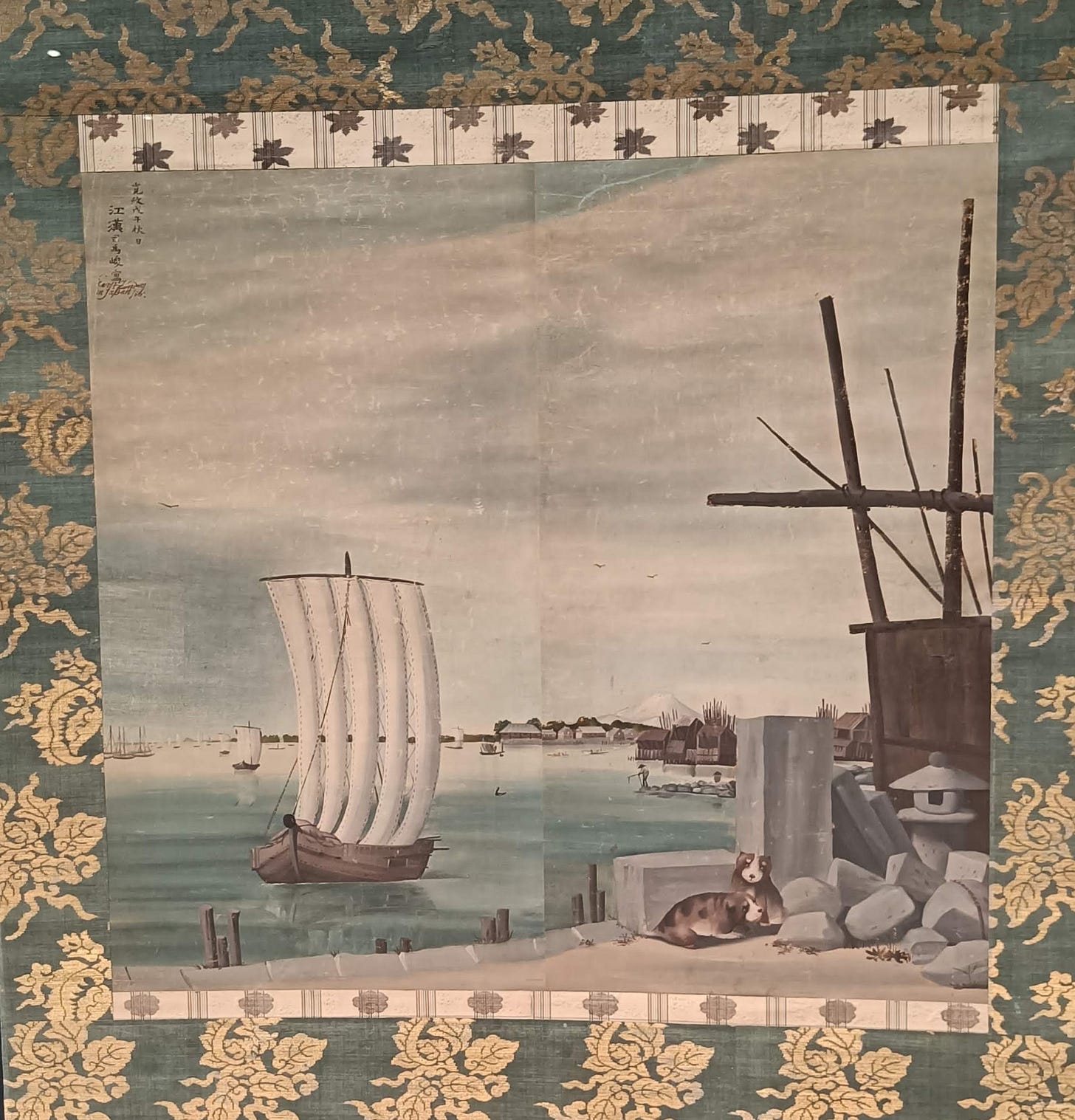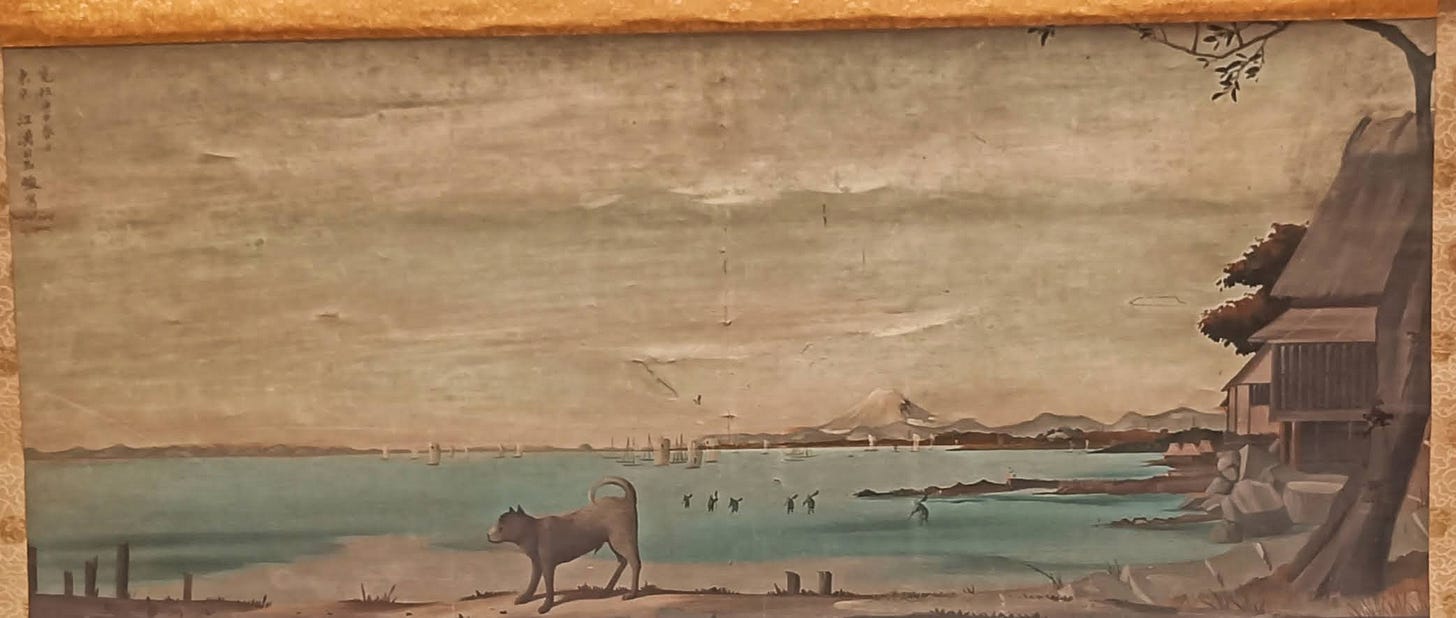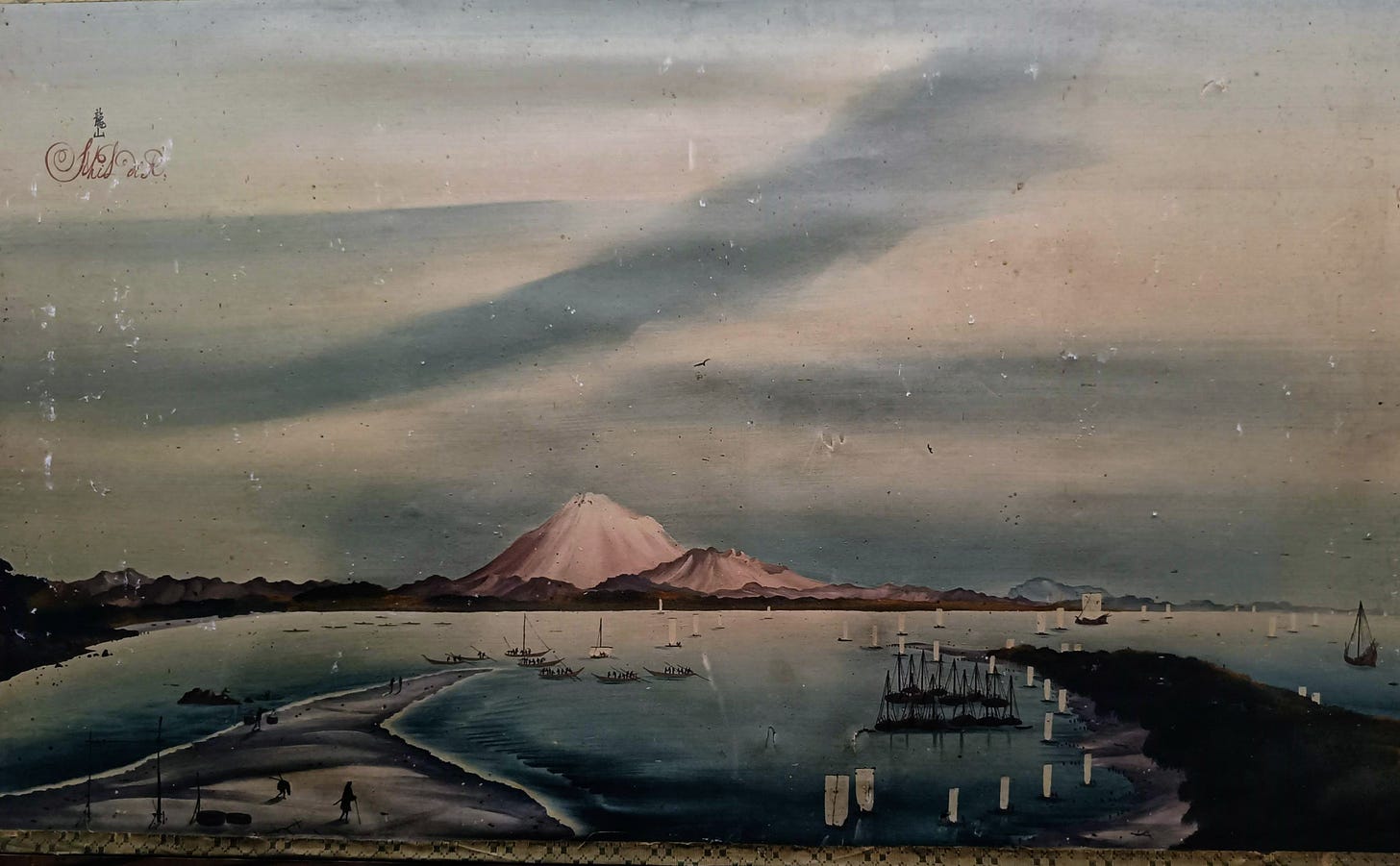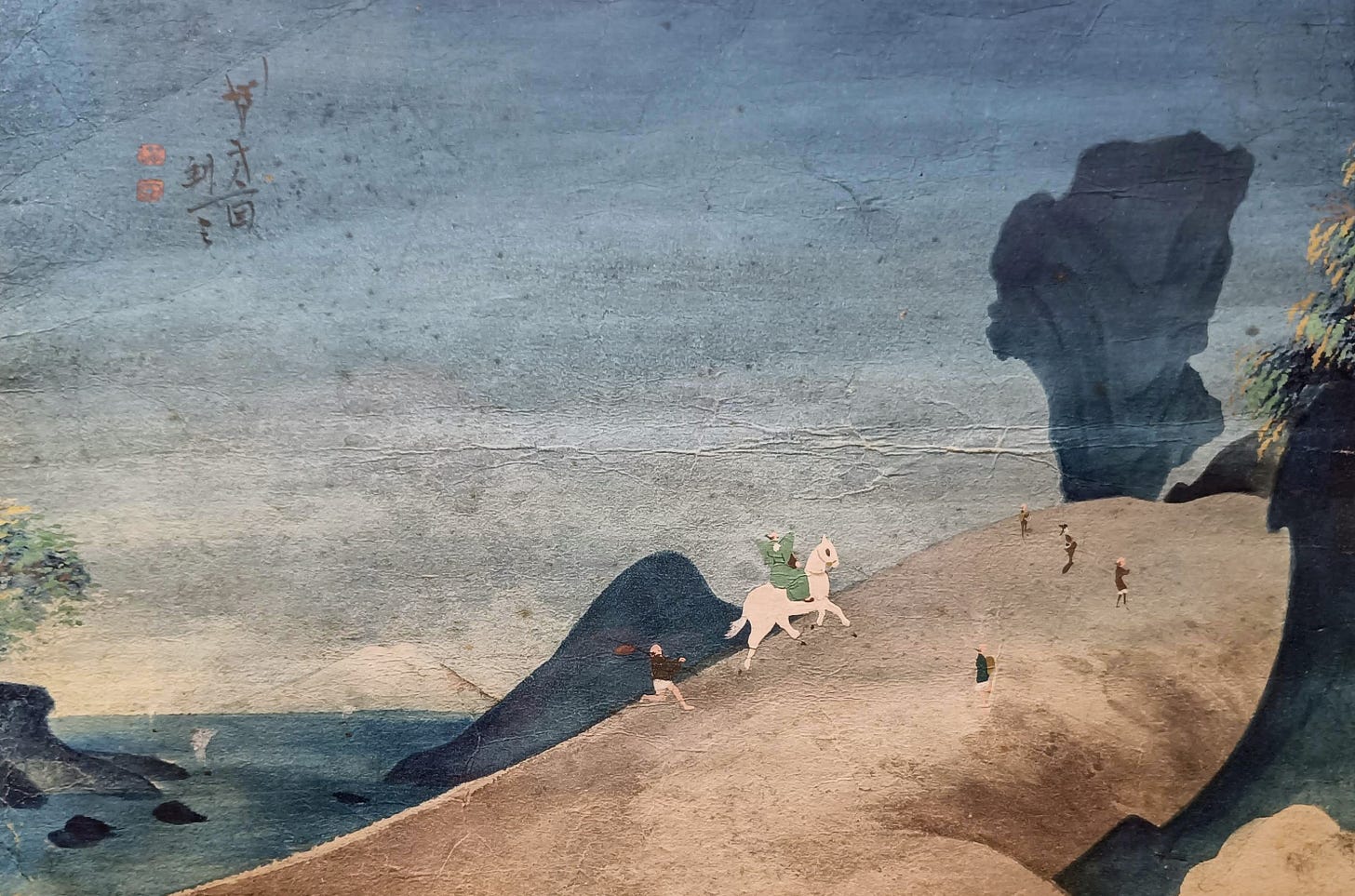Five Views of Fuji
These rarely-seen paintings of Japan's iconic mountain made me look at Japanese art in a different light

Dear Reader
As I am on my summer break until the end of June, I am re-posting essays from September 2023, the month I started writing on Substack. As the number of subscribers and followers to English Republic of Letters numbered at most a few dozen that month (this essay, for example, was originally sent to 47 subscribers), most of you won’t have received these postings the first time around. I hope the hardy stalwarts who have been with me since then, and to whom I owe a special debt of gratitude for your support since those early days, will forgive the repetition.
Your comments are very welcome, as always.
I’m adding an extra post this week, nudged by the wonderful
who in her latest post encouraged us to think of a ‘formative encounter with art’.I recently saw a gem of an exhibition at my local art museum. One of its aims was to offer, quite literally, different perspectives on art depicting Mount Fuji.
Mount Fuji is, of course, one of the most famous mountains in the world. It attracts tourists from all over the country and all around the world, many eager to climb it. Too many, say some. For the Japanese, it’s more than a mountain; it’s a spiritual site and a cultural icon.
I’ve lived in the shadow of a few mountains over the years. I have also walked in the Alps and the Andes and across the moonlike terrain around El Teide in Tenerife, Spain’s highest peak. I’ve been threatened by active volcanoes, such as Popocatépetl in Mexico. But although I enjoy hiking, I’m no mountaineer and actually prefer to enjoy my peaks from a safe distance or in photos or paintings.
Paintings like these.
I’ve chosen five of my favourite pictures from the exhibition. I hope you will enjoy them as much as me1.
The first is actually a folding screen. It was painted by Kanō Naonobu, a well-known painter of the 17th century. It is in a traditional Japanese style and I love the mountain’s rather ghostly appearance here. It’s quite sparse on detail (though some parts have also faded away). This is Fuji as the sacred mountain, the mountain of the imagination, seen as quite separate from ordinary life.
The rest of the paintings here were influenced in some way by Western art practice. Despite Japan’s long period of “closure” to the West (it never closed completely to the world), the open port of Nagasaki allowed examples from Chinese and Dutch art to reach the country.
‘View of Mount Fuji from Teppozu’, by Shiba Kōkan (1798). Here, Fuji is a distant feature, hardly noticeable at first glance. Instead, my eye was drawn to the wonderful sailing boat and the somewhat sleepy-looking, cute dogs in the foreground. It’s a peaceful view of everyday life, with the sacred mountain calmly looking on.
I’m no expert on Japanese boats, but this one might be a ‘higaki-kaisen’, in which case it might have sailed up from Osaka. I am, though, happy to be corrected on that!
This is a ‘View of Mount Fuji from Fukagawasusaki’, also by Shiba Kōkan (1800). This is quite similar to the one before, in that the mountain is again a distant presence and there is also a dog in the foreground. The viewpoint is different, of course, and we can see a number of figures in the shallow water. Perhaps they are fishing?
‘Edo Landscape’, artist unknown. 18-19th century. Here, Fuji is altogether more majestic and imposing, dominating the scene. But the ships and boats, varied in style and function, also take up a lot of our attention in the middle and foreground. On the left, there are figures carrying burdens or just looking out to sea. The mountain is seen very much in a setting of human commerce and civilisation.
‘View of Harashuku’, artist unknown. 18-19th century. I found this painting fascinating. I has almost a cartoonish feel to it, in the depiction of the white horse and the man running behind it. Fuji is once more in the background, with the human scene dominating.
When I saw this painting, I thought of W.H. Auden’s poem, ‘Musée des Beaux Arts’. That poem focuses on Brueghel's ‘Icarus’ and famously notes that while suffering or events of great importance happen:
“… the dogs go on with their doggy life and the torturer's horse
Scratches its innocent behind on a tree.”
Neither here nor in the previous three paintings is there anything as momentous as the fall of Icarus (though I can almost picture him splashing into the water on the left side of the final one), but there is the luminous, almost glowering presence of Fuji. And these paintings show that while the mountain looms portentously, symbolising the culture of the nation, dogs and horses and fishers all appear indifferent and are simply—and rather beautifully—getting on with their lives.
These talented painters had taken a way of looking at the world from a foreign tradition and made it, triumphantly, their own.
All the photos were taken by myself. Some of these works have suffered damage over the years and none are in perfect condition. All are from the Kikuan Collection.









Wow, that screen!
Beautiful paintings Jeffrey. Thank you so much for sharing them. And thank you to @Katherine May for the prompt.